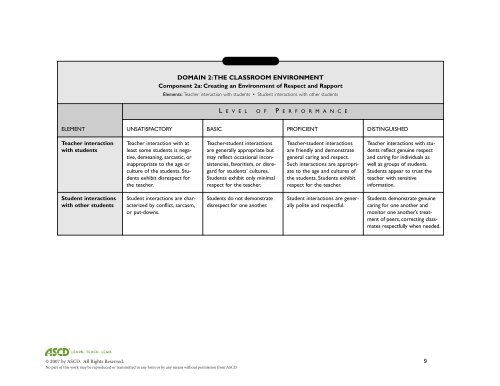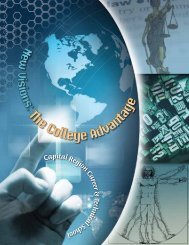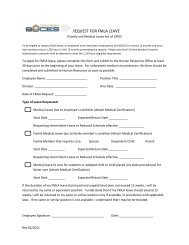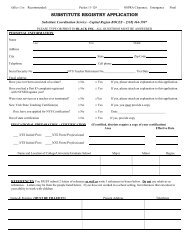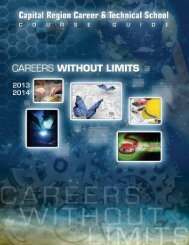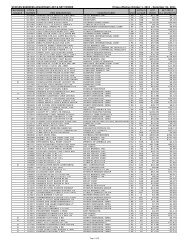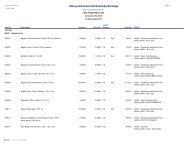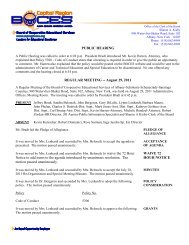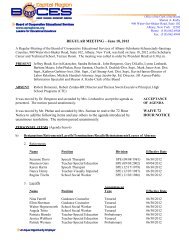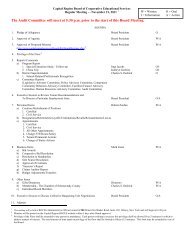Rubrics for Professional Practice - the State Board of Education
Rubrics for Professional Practice - the State Board of Education
Rubrics for Professional Practice - the State Board of Education
Create successful ePaper yourself
Turn your PDF publications into a flip-book with our unique Google optimized e-Paper software.
one ano<strong>the</strong>r (some <strong>of</strong> <strong>the</strong>m negative), promoting positive interactions<br />
among students is a critical aspect <strong>of</strong> teaching. As Anna<br />
Quindlen put it in a commencement address in 2002: “People<br />
will <strong>for</strong>get what you said. They will <strong>for</strong>get what you did. But<br />
<strong>the</strong>y will never <strong>for</strong>get how you made <strong>the</strong>m feel.”<br />
classroom. Occasionally, interaction with a student, or student<br />
interactions with one ano<strong>the</strong>r, may require that a teacher <strong>of</strong>fer<br />
an explanation so that an observer can fully understand <strong>the</strong><br />
teacher’s actions. Such explanations can take place in a discussion<br />
following <strong>the</strong> class. (See Figure 4.7.)<br />
DOMAIN 2:THE CLASSROOM ENVIRONMENT<br />
Component 2a: Creating an Environment <strong>of</strong> Respect and Rapport<br />
Elements: Teacher interaction with students • Student interactions with o<strong>the</strong>r students<br />
L E V E L O F P E R F O R M A N C E<br />
ELEMENT<br />
UNSATISFACTORY BASIC PROFICIENT DISTINGUISHED<br />
Teacher interaction<br />
with students<br />
Teacher interaction with at<br />
least some students is negative,<br />
demeaning, sarcastic, or<br />
inappropriate to <strong>the</strong> age or<br />
culture <strong>of</strong> <strong>the</strong> students. Students<br />
exhibit disrespect <strong>for</strong><br />
<strong>the</strong> teacher.<br />
Teacher-student interactions<br />
are generally appropriate but<br />
may reflect occasional inconsistencies,<br />
favoritism, or disregard<br />
<strong>for</strong> students’ cultures.<br />
Students exhibit only minimal<br />
respect <strong>for</strong> <strong>the</strong> teacher.<br />
Teacher-student interactions<br />
are friendly and demonstrate<br />
general caring and respect.<br />
Such interactions are appropriate<br />
to <strong>the</strong> age and cultures <strong>of</strong><br />
<strong>the</strong> students. Students exhibit<br />
respect <strong>for</strong> <strong>the</strong> teacher.<br />
Teacher interactions with students<br />
reflect genuine respect<br />
and caring <strong>for</strong> individuals as<br />
well as groups <strong>of</strong> students.<br />
Students appear to trust <strong>the</strong><br />
teacher with sensitive<br />
in<strong>for</strong>mation.<br />
Student interactions<br />
with o<strong>the</strong>r students<br />
Student interactions are characterized<br />
by conflict, sarcasm,<br />
or put-downs.<br />
Students do not demonstrate<br />
disrespect <strong>for</strong> one ano<strong>the</strong>r.<br />
Student interactions are generally<br />
polite and respectful.<br />
Students demonstrate genuine<br />
caring <strong>for</strong> one ano<strong>the</strong>r and<br />
monitor one ano<strong>the</strong>r’s treatment<br />
<strong>of</strong> peers, correcting classmates<br />
respectfully when needed.<br />
© 2007 by ASCD. All Rights Reserved. 9<br />
No part <strong>of</strong> this work may be reproduced or transmitted in any <strong>for</strong>m or by any means without permission from ASCD.


